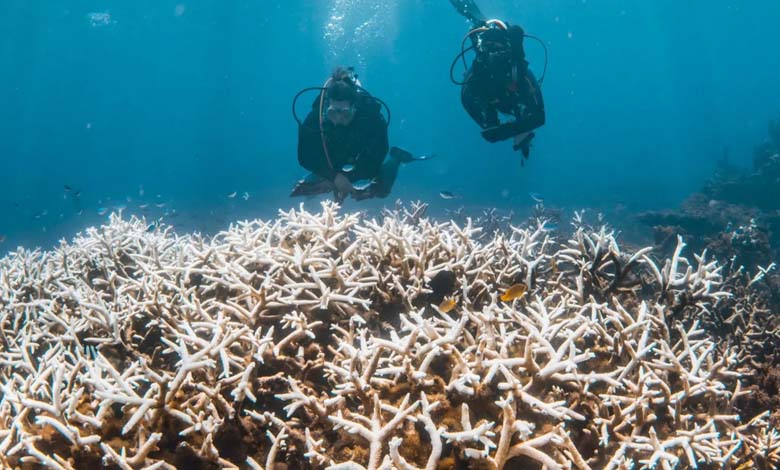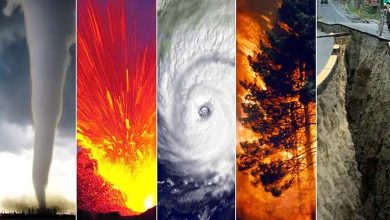Extreme Heat Devastates Coral Reefs in Western Australia

The coral reefs off the coast of Western Australia have suffered extensive and unprecedented damage during the latest southern hemisphere summer. The soaring ocean temperatures have caused destruction on an alarming scale, according to reports from a local non-governmental organization dedicated to marine conservation.
-
Human Drug Residues Threaten the World of Coral Reefs
-
600-year-old coral reefs reveal climate secrets
Despite having largely avoided severe bleaching in previous years, the Ningaloo Reef—one of the most significant reef systems in Australia—has experienced a level of deterioration never seen before. Marine biologist and oceanographer Kate Quigley, who works with the Minderoo Foundation, described the situation in stark terms: “The ocean heat has literally burned the coral reefs this year.”
The Unprecedented Damage to an Ecosystem of Global Importance
The Ningaloo Reef, a UNESCO World Heritage-listed site, stretches for approximately 300 kilometers along the western coastline of Australia. It serves as a crucial habitat for an array of marine species, including a vast population of sharks, sea turtles, and countless varieties of fish.
-
Danger Looms from the Oceans… The UN Issues a Stark Warning to Humanity
-
“Concerning Symptoms”: A Fog with a “Chemical” Smell Covers Florida’s Skies
However, the latest assessments indicate that the reefs have experienced degradation on a scale that has not been recorded since 2011, when a previous marine heatwave caused widespread coral mortality. According to Quigley, the destruction is not limited to the upper layers of the reef, which are more exposed to direct sunlight and bleaching events, but also extends to the deeper areas, where corals were previously believed to be somewhat protected from extreme temperature fluctuations.
Rising Ocean Temperatures and the Devastating Effects of Coral Bleaching
According to data from the Australian Bureau of Meteorology, the waters along the western coastline of the continent have exceeded their historical average temperatures by an alarming margin of three degrees Celsius. This dramatic increase in ocean surface temperatures has triggered a mass coral bleaching event, a phenomenon that occurs when corals expel the symbiotic algae that live within their tissues. These algae, known as zooxanthellae, provide corals with essential nutrients and give them their vibrant colors. Without them, corals turn a ghostly white, a condition that significantly weakens them and can ultimately lead to their death if high temperatures persist for an extended period.
Reports from the Agence France-Presse (AFP) indicate that the bleaching crisis has not been confined to Western Australia alone. Quigley also noted that similar bleaching patterns have been observed along the Great Barrier Reef, located on the eastern coast of the country. This development is particularly concerning, as the two reef systems are separated by vast distances and are subject to distinct climatic conditions. The simultaneous bleaching of both reef systems serves as what Quigley described as “a dire warning sign” of the accelerating impact of climate change on the world’s oceans.
Why Coral Reefs Matter: The Role of These Fragile Ecosystems
Coral reefs are often referred to as the “rainforests of the sea” due to their immense biodiversity and their crucial role in supporting marine life. They provide shelter, food, and breeding grounds for a vast number of marine species, many of which are essential to global fisheries and coastal communities. In addition to their ecological significance, coral reefs act as natural barriers, reducing the strength of waves and protecting coastlines from erosion, storm surges, and even tsunamis.
-
The “Ocean Acidification” Crisis Threatens Earth’s Habitability
-
Predatory worms devour “everything they encounter” in the Mediterranean
However, these delicate ecosystems are under growing pressure from a combination of human-induced threats. According to the United States’ National Oceanic and Atmospheric Administration (NOAA), more than 80% of the world’s coral reefs are expected to be affected by significant bleaching events between 2023 and 2025 if current temperature trends continue. The agency warns that without immediate intervention and substantial efforts to mitigate global warming, many of the world’s most iconic reefs could be pushed past the point of recovery within the next few decades.
The Broader Threats Facing Coral Reefs Worldwide
Beyond rising ocean temperatures, coral reefs are also facing a range of additional threats that compound their vulnerability. The United Nations Environment Programme (UNEP) has identified several key factors contributing to the decline of coral reef ecosystems, including:
-
“Mysterious” Seats on an American Beach Spark Speculation about their Origin
-
Climate: Catastrophic consequences may occur… According to a study
- Climate Change: The primary driver of coral bleaching, as increased greenhouse gas emissions lead to rising ocean temperatures and greater frequency of marine heatwaves.
- Ocean Acidification: As carbon dioxide (CO₂) levels in the atmosphere continue to rise, the oceans absorb more CO₂, leading to increased acidity. This weakens coral skeletons and makes it harder for reefs to rebuild after damage.
- Overfishing and Destructive Fishing Practices: The removal of key species disrupts the delicate balance of reef ecosystems, while destructive techniques such as dynamite fishing and cyanide fishing cause direct physical damage to coral structures.
- Coastal Development and Pollution: Runoff from agriculture, industrial waste, and plastic pollution contribute to declining water quality, which can suffocate corals and promote the growth of harmful algae.
-
How does climate change affect the acidity of the Southern Ocean?
-
Climate Change and Respiratory Issues: The Role of Heat and Drought in Bronchial Inflammation
A Call to Action: The Urgent Need for Reef Conservation Efforts
Given the severity of the crisis facing coral reefs, marine scientists and environmental organizations are calling for urgent action to protect these ecosystems before it is too late. Conservation initiatives are increasingly focused on improving the resilience of coral reefs by promoting sustainable fishing practices, establishing marine protected areas, and developing coral restoration projects.
In addition, researchers are exploring innovative solutions such as assisted evolution, a technique that involves breeding heat-resistant corals to help them withstand future temperature spikes. Other efforts include coral gardening, where healthy coral fragments are cultivated in nurseries and later transplanted onto damaged reefs to aid in their recovery.
-
New Study Reveals: Waves May Have Been the Cradle of Life on Earth
-
A decades-long journey… A massive iceberg settles near a remote island
Despite these efforts, experts agree that the most critical step in saving coral reefs lies in tackling the root cause of their decline—climate change. Reducing greenhouse gas emissions, transitioning to renewable energy sources, and implementing stricter environmental policies are all essential measures to slow the rate of global warming and give coral reefs a fighting chance to survive.
Without decisive action, the loss of coral reefs could have devastating consequences, not only for marine biodiversity but also for millions of people around the world who rely on these ecosystems for food, livelihoods, and coastal protection. The crisis unfolding in Western Australia is a stark reminder of the urgent need for global cooperation in the fight against climate change.












